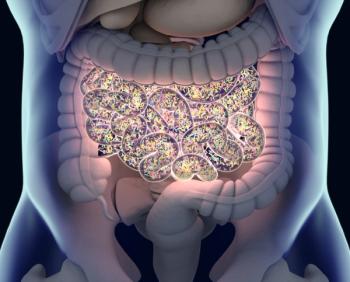
Oncology NEWS International
- Oncology NEWS International Vol 8 No 4
- Volume 8
- Issue 4
Modeling Cancer Risks ‘Problematic But Still Useful’
ANAHEIM, Calif-“Mathematical modeling of cancer risk involves a number of unknown or inadequately understood relationships and factors, but still can provide worthwhile hypotheses for further testing,” Troyce Jones, MS, senior research scientist, Oak Ridge National Laboratory, said at a symposium on environmental hazards and cancer at the annual meeting of the American Association for the Advancement of Science (AAAS).
ANAHEIM, CalifMathematical modeling of cancer risk involves a number of unknown or inadequately understood relationships and factors, but still can provide worthwhile hypotheses for further testing, Troyce Jones, MS, senior research scientist, Oak Ridge National Laboratory, said at a symposium on environmental hazards and cancer at the annual meeting of the American Association for the Advancement of Science (AAAS).
Mr. Jones, a mathematician, said that we do not know enough about carcinogenic processes to derive from first principles the risk relationships between exposure to hazards and development of disease.
It Takes a Large Dose
On a molecular or cellular level, he said, it takes a large dose of a hazardous substance to cause cancer, in the neighborhood of thousands of molecules per cell. Studies of the carcinogenic properties of aflatoxin, for example, suggest that a thousand molecules per cell per day are needed.
Cancers usually develop from a single cell, Mr. Jones said, but they generally are not diagnosed until that single cell has divided and multiplied to reach a volume of a gram, or a billion cells. Modeling risk, however, involves going backwards to discern doses of one of many agents involved in the carcinogenic process, he said.
Further complicating any calculation is the fact that the immune system is always a mediator, although it is very difficult to model because of the many complex relationships among its elements. The chemicals that drive the immune system, and their relationships are still not known, and humans have some two dozen cytokines, he said. All these different cells and cytokines interact with each other.
Risk analysis, furthermore, traditionally depends on the assumption that a human is a human, Mr. Jones said. For a great variety of reasons, known and unknown, however, the immune system of any individual varies from day to day, from season to season; it varies with almost everything.
What is the Connection?
In an ideal world, Mr. Jones commented, one would want to know the connections between chemical exposures and development of disease. But in spite of all the knowledge presented at this meeting and found in the published literature, he said, science still cannot get from one to the other.
Despite these serious issues, however, some factors are very strongly correlated with cancer cell proliferation, such as unrepaired DNA double strand breaks. The prevailing theory that oxygen radicals relate to risk, for example, gets stronger every year instead of weaker, he said. The same is true for the inverse correlation between cancer and factors that strengthen immunity.
He pointed out that 81% of studies show a twofold protection from cancer from high consumption of fruits and vegetables, rich in antioxidants.
Useful in Suggesting Hypotheses
Although, at present, knowledge is insufficient for modeling to serve a predictive function for many cancers, it nonetheless is very useful in exposing relationships that suggest hypotheses for further testing, he concluded.
Articles in this issue
almost 27 years ago
PDT Under Study for High-Grade Dysplasia in Barrett’s Esophagusalmost 27 years ago
Importance of Assessing, Treating Pain in the Cancer Patientalmost 27 years ago
Post Office Boosts Breast Cancer Stampalmost 27 years ago
RT After Mastectomy Reduces Recurrence Riskalmost 27 years ago
Who Smokes? A Profile of Smokers in the USalmost 27 years ago
Elderly May Do Well With Tamoxifen Without Surgeryalmost 27 years ago
Managing Respiratory Symptoms of Advanced Canceralmost 27 years ago
Results of Prevention Trials in Prostate, Colon, Breast Canceralmost 27 years ago
NABCO ‘Celebrates Life’ and Honors Breast Cancer Survivors at Luncheonalmost 27 years ago
Multimodal Screening Strategy for Ovarian CancerNewsletter
Stay up to date on recent advances in the multidisciplinary approach to cancer.






























































































